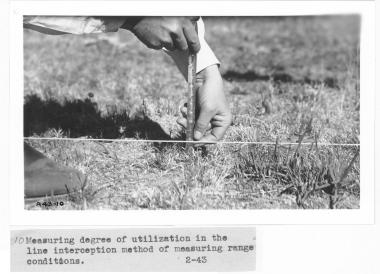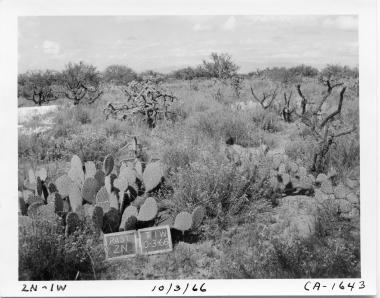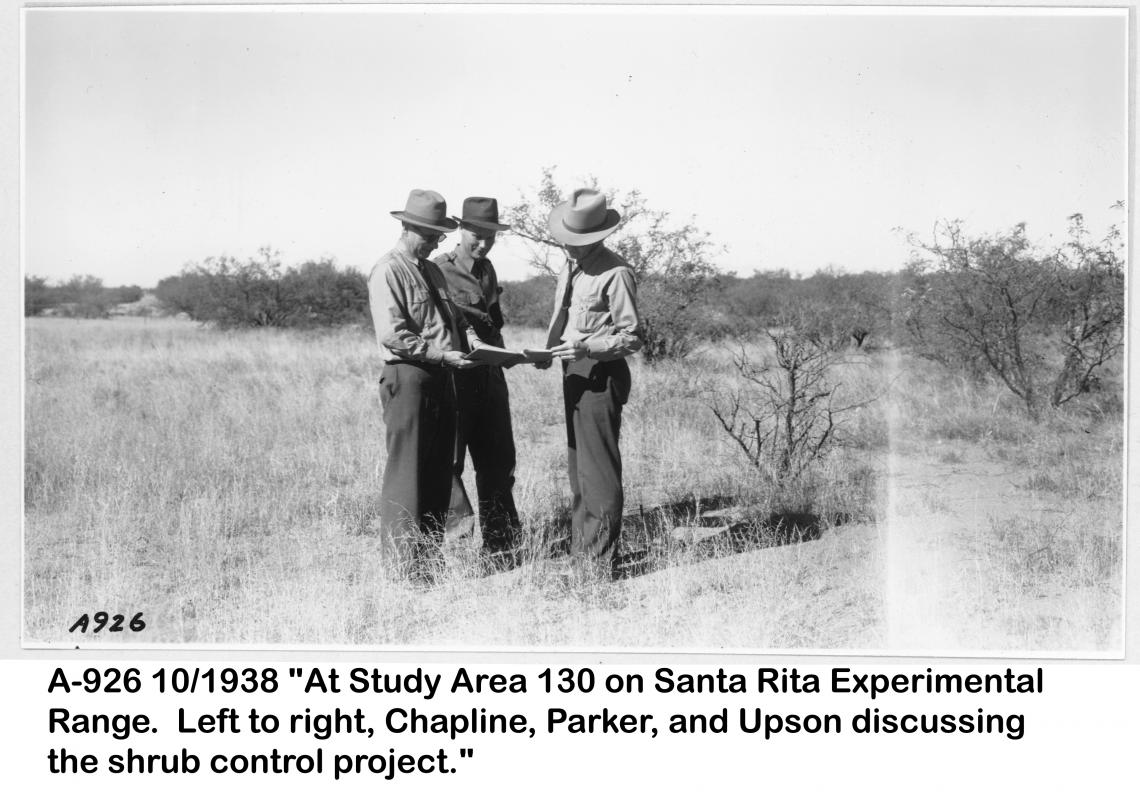Research Emphasis
1943 02 xx line intercpt deg of util.jpg

Research Emphasis at the Santa Rita Experimental Range
Sayre (2003) recognized four periods of research emphasis through the early part of the 21st Century. From 1901-1931, Institutional Consolidation, Revegetation, and Carrying Capacity with emphasis on how to restore forage plants following intense livestock grazing pressure that occurred before 1900, and how to estimate forage production to establish livestock carrying capacity estimates. From 1932-1945, Growth and the Shrub Problem with most emphasis on documenting increases in shrub species like velvet mesquite and burroweed, and declines in forage grass abundance. From 1946-1965, Age of Mesquite with emphasis on life history of velvet mesquite, methods to kill it, and responses of the ecosystem when mesquite was reduced. From 1966-1988, Ecology and the Santa Rita Grazing System with emphasis on basic ecosystem and species biology and ecology, as well as studies examining the results of grazing systems (seasonal rotations and rest) on vegetation.
2N_1W_from_100_1966_Oct_03.jpg

References
Griffiths, David. 1904. Range investigations in Arizona. Bureau of Plant Industry Bulletin No. 67 (10 plates). Washington, DC: U.S. Department of Agriculture. 62 p.
Medina, Alvin L. 1996. The Santa Rita Experimental Range: History and Annotated Bibliography (1903-1988). General Technical Report RM-GTR-276 Rocky Mountain Forest and Range Experiment Station Forest Service U.S. Department of Agriculture. 67 p.
1938 10 xx A-926 discussing shrub control.jpg


